Our Challenges
Standardization of Health/Medical ICT (Platform)
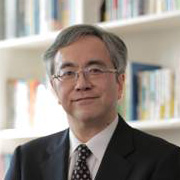
Graduate School of Medicine, The University of Tokyo
Medical Informatics and Economics
Standardization of Health/Medical ICT (Platform)
Alignment of health/medical information
Genomic database
【Accumulation of health and medical data in a standardized format is the foundation for practical utilization】
Almost all of health and medical data are generated, measured, and recorded sporadically under various situations in the medical field and every-day life. To integrate these data and utilize them as a meaningful source of information is crucial in medical big data analysis and medical artificial intelligence (AI). However, since Real World Data tends to be generated as data to serve one particular purpose, the content, recording format and saving of data is done in a fragmented way, and the medical field is no exception. Just collecting does not yield a useful database. In such a chaotic situation, paper or electronic data alike, it is impossible to integrate health and medical data obtained from multiple establishments, from both the medical field and everyday life, in order to get a health and medical data set on a particular individual and make use of it. Nonetheless, it is believed that an analyzable huge database can be created by just collecting EMR data from a large number of hospitals.
【The Real World goes from the medical front to everyday life, from clinical data to health data, and to genomic information which is the feature of the individual】
The Standardization of Health and medical ICT team will standardize not just the format but the meaning of every kind of data generated as Real World Data at the health and medical fronts. It will adjust the informstion granurarity or the degree of fineness of the information necessary, and carry out the process of integrating data from the medical and everyday life into a health and medical data for each individual. The resulting standardized health and medical data will serve as a common platform for various uses, like an underground foundation of a building.
We have been working on the standardization of the data generated in medical institutions by setting the SS-MIX2 standardized storage regulation, according to the international standard ISO 27191 and standards of the Ministry of Health, Labour and Welfare. SS-MIX2 has spread to 35% of EMR’s in Japanese hospitals. As a next step, we developed the MCDRS (Multi-purpose clinical data repository system; pronounces 'MAC DOCTORS') clinical case database formulation platform to make use of the standardized data. This system has been adopted by a number of academia-driven large-scale case database projects including the diabetes clinical database J-DREAMS directly connected to medical records, and the chronic renal disease database J-CKD-DB.
The next target is data generated and recorded in everyday life including home blood pressure, weight and physical exercise, which has challenges unique from medical data. Various measuring devices are being sold and used arbitrarily by common people. This data is then registered sporadically in unstandardized systems as one pleases. With these challenges in mind, it is difficult to obtain research-level data, but if a large amount of data is accumulated in chronological order, and can be linked to medical data, the value of the data will increase.
Further, we would like to integrate genomic analysis information which is the ultimate source of originality of an individual with these medical data and health information from everyday life. We would then connect them as necessary and make use of them.
Once standardization of health and medical information and data collection platform is established, what lies ahead is the development of a new health and medical service utilizing this data platform, the establishment of a new clinical research environment using this data platform, and feedback to basic medicine. In the Post-COI phase, medical AI (artificial intelligence) will flourish, which is only possible with a large scale health and medical data. This is especially so in the research and development of medical support system utilizing deep learning, and such new data environment for medicine and medical research, should cause a change in the society.
Preparation in progress
Genomic analysis
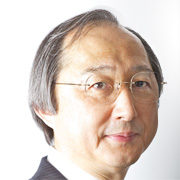
Human Genome Center, The Institute of Medical Science, The University of Tokyo
DNA Information Analysis
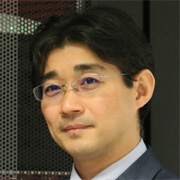
Health Intelligence Center, The Institute of Medical Science, The University of Tokyo
Health and Medical Data Science
Application of Watson and Metagenome Analysis
The genetic information we inherit from our parents and pass down to our children is written in the 3 billion base pairs (four types: A, T, G, and C) that make up our DNA. This data is what we call our genomic information. It is known that each individual differs from the next by an average of one per 1,000 bases. These differences are linked to the differences in our appearance, constitution and health, as well as the different risks we have for disease. Moreover, it is becoming clear to us that these differences also influence the effectiveness of several medications.
There are many diseases related to DNA. Cancer is a disease that occurs when various parts of one's DNA "break down" over a long period of time, and those breakdowns then accumulate. Here, a breakdown means that a particular base in the DNA might end up replaced by another base for some reason and the cancer cells thus escape the normal control mechanisms. These acquired DNA failures are known as mutations.
From around 2010, a piece of equipment called the Next-Generation Sequencer meant to decode our genome began to spread, and we started being able to get our hands on each of our individual genomic information, made of our 3 billion base pairs. 20 years ago it would have taken hundreds of billions of yen to decipher one person's genome, but a few years ago the cost fell to about 100,000 yen. As of 2017 it has become even cheaper, and a massive fall in prices is occurring. The genomic information of many people is being decoded with the goal of using this data through this technology for the maintenance of health and the prevention and treatment of disease. The number of people involved around the world is estimated to be about a million at the moment, but it is believed that that number will swell to hundreds of millions by the Tokyo Olympics. Soon, far more than a billion people will have access to their own genomic information.
In order to use someone's genomic information to maintain their health and prevent disease, that information must first be interpreted. There are over several million differences between the genomes of two individuals. Also, initiatives are progressing to decode the DNA of cancer cells, identify where there are mutations, and apply that information to treatment. Although the answers differ depending on the type of cancer as well as between individuals, thousands to tens of thousands of mutation points have been found, including some against which anti-cancer drugs may be effective. In order to promptly discover these mutations and apply effective treatment, we must first interpret each and every one of the vast number of mutations.
The interpretation of this genomic information is now the bottleneck in our quest to use this information to create a society where everyone can live a healthy life. Furthermore, in recent years, we have come to understand that the microorganisms (bacteria and germs) living within our bodies, such as in our mouths and digestive tracts, affect our illnesses and our health. What we call our intestinal flora is part of this. I believe that from now on, it will be essential to combine and interpret our genomic information, our lifestyles, and the information of the microorganisms who live symbiotically with us, and apply this knowledge to maintain our health as well as to develop new treatment methods. At the Institute of Medical Science of the University of Tokyo, research is being done on using artificial intelligence (AI) to interpret genomic information, in order to strongly promote "cancer clinical sequencing" based on whole genome sequencing that investigates all 3 billion base pairs of a cancer patient's genome. For example, physicians succeeded in decoding the DNA of patients with blood cancer using next-generation sequencing; identifying about 1,600 mutations through analysis by SHIROKANE supercomputer; and using IBM Watson to identify which mutations were related to the patient's condition and even suggest candidates for anti-cancer drugs, all within five days. This whole process would normally have taken a month, but it was drastically shortened by identifying at which stages AI could be most effectively used and applying Watson to the task. Now, researchers are working on advancing our knowledge of AI, including Watson, in order to increase accuracy even further, as well as tackling the technological, regulatory, and psychological issues relating to implementing AI clinical sequencing in society.
The plan from now on is to expand this initiative to diseases apart from cancer and even to healthy people. We will also develop technology that can comprehensively measure through sequencing analysis the information of the microorganisms, such as bacteria and viruses, who live symbiotically with us. By analyzing and interpreting this abundant information through supercomputers and AI, we can generate highly accurate data and reliable evidence. We will advance our research on creating a healthy society where this information can be practically applied.
Visualization of health risk
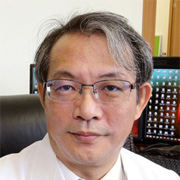
Graduate School of Medicine, The University of Tokyo
Verbal analysis of pathophysiology
Voice analysis of pahtophysiology
Dept. of Verbal Analysis of Pathophysiology, Graduate School of Medicine, The University of Tokyo
In our department, we have developed a software that identifies the emotions in the voice and measures the mental health from the change in the emotion. By using the emotion, it became possible to get closer to the sensation of the subject.
Today, we have developed a smartphone application (MIMOSYS: Mind Monitoring System) from this technology and opened it to the public. It is used by many people. In addition, Hitachi Systems Co., Ltd. Is collaborating with PST Corporation, the original joint developer of this technology, to offer a cloud-type healthcare service "voice analysis of the mind ".
Strictly speaking, though, our system can distinguish whether the speaker is healthy or not healthy, but it cannot tell why he/she is not healthy. In other words, we do not know what kind of illness the speaker has.
Therefore, we will utilize our experience to improve the accuracy and develop a "voice pathology analysis technology" that can be applied to various diseases in addition to stress.
The next step is to develop a system that can discriminate between major depression and bipolar disorder, which are both a type of depression but need different treatments. We will also make the challenge to distinguish among depression, Parkinson's disease, and dementia, because these diseases show high merger rates and are difficult to differentiate at early onset.
Also, in order to support the existing MIMOSYS to work in multiple languages, we are preparing for the verification in various languages.
In the near future, the voice will become more and more popular as a man / machine interface, and we will find ourselves in a society where speech input will be common in every scene. At such time, the machine may not only execute an instructed command, but may sense the user's health and make more appropriate movements or suggestions.
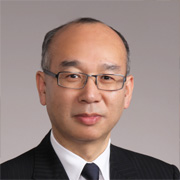
The University of Tokyo Hospital
Public health and Health Science
Behavioral Prediction/Preventive Medicine - The future body of your own choice-
The metabolic syndrome is regarded as a cause of many lifestyle-related diseases. The Japanese Ministry of Health, Labor and Welfare has announced that half of all 40-74 year-old men, and one in five of 40-74 year-old women have pre-metabolic syndrome, or are at high risk of developing metabolic syndrome.
Health examinations (specific medical checkups and health guidance) focusing on metabolic syndrome for the prevention of lifestyle-related diseases started in April 2008. This is a Japan-specific primary prevention program which targets 40-74 year-olds.
However, with the exception of "active support" groups, many institutions do not provide substantial interventions to those who need specific health guidance.
In addition, from 2016, a yearly stress-check became obligatory in companies in order to identify and prevent depression.
So far, the verification of methods and effectiveness of early intervention for the prevention of lifestyle-related diseases has not been fully discussed.
Consequently, we are proceeding with a project focusing on the following two points: First, that our prediction model for metabolic syndrome will identify people who are at high risk of developing metabolic syndrome within a few years’ time.
By understanding the limitation of the conventional approach to metabolic syndrome in Japan, we have decided to tackle the problem with a new approach by implementing early detection and offering intervention in the hidden high-risk population.
The second point is the visualization of data concerning the future health risks to allow people to intuitively understand non-subjective symptoms. By using the algorithm based on integrated health-related data, we have been developing a program which calculates and visualizes future health risks, and aims to promote spontaneous behavioral change through increased self-awareness. Our program enables us to regard future health risks as our own problems by visualizing risk information, in addition to realizing sustainable behavioral changes.
We aim to reduce your risk of diseases through your participation in our lifestyle disease prevention program. This program provides personal advice by combining new technologies with the input of medical specialists.
Disease prevention measures
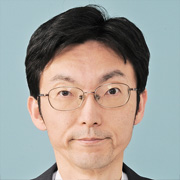
Graduate School of Medicine, The University of Tokyo
Allergy and Rheumatology
Immunological Diseases
We have participated in the Center of Innovation (COI) of The University of Tokyo, Self-Managing Health Society, from the middle of phase 1 in cooperation with Chugai Pharmaceutical. Our project is “Integrated understanding of human immunology with functional genomics and construction of intervention strategy to prevent immunological diseases”. Following the preparation of a joint laboratory in phase 1, we are conducting our project in phase 2 to significantly contribute to our society.
In the United States, the Precision Medicine Initiative has been launched in 2015. Until now, most medical treatments have been designed for the “average patient.” As a result, treatments can be very successful for some patients but not for others. Precision Medicine, on the other hand, is an innovative approach that takes into account individual differences in people’s genes, environments, and lifestyles. It develops our scientific and medical research, and keeps our families healthier.
Most diseases, especially common diseases, are induced by a combination of genetic risk and your environment. Information of genetic background greatly helps to understand the pathogenesis of common diseases. However, it has been recognized that information for genetic polymorphism alone is not sufficient to classify patients and to predict disease outcomes. In immunological diseases including rheumatoid arthritis, the alteration of lymphocytes functions by genetic background and environmental factors determines the disease onset. Therefore, combining information from genetic background and gene expressions of lymphocytes enables us to precisely classify patients and diseases.
In the 1st stage of our project, we will evaluate the linkage between lymphocytes subset, gene expressions and clinical parameters using data for transcriptome and genetic polymorphism from hundreds of immunological disease patients. In the 2nd stage, we attempt more extended classification of patients using data for genetic polymorphism from thousands of patients in public database. The project actually combines the advantage of middle-sized detailed data and big data. Our purpose is to predict gene expression in lymphocytes, disease risk and suitable therapy in an individual from genetic information. Because immune system regulates many aspects of common diseases including atherosclerosis, this project will contribute to the realization of the concept of Self-Managing Health Society.
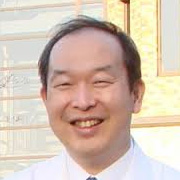
Graduate School of Medicine, The University of Tokyo
Nephrology
Diabetic Nephropathy
In Japan, aging of the society is rapidly progressing, and it is emergently required to change the society structure to “self-managing health society”. For implementation of “self-managing health society” it is essential to develop the innovative system of prevention, diagnosis, and treatment and to decrease hospital visits and hospitalization dramatically.
Chronic kidney disease is a national disease, with 13.3 million suffering from this disease in Japan. Chronic kidney disease progresses to end stage kidney disease and requires renal replacement therapy such as dialysis and transplantation. In addition, patients with chronic kidney disease often have cardiovascular complications and show marked decrease in quality of life due to complications such as anemia and bone mineral disorder. Thus, chronic kidney disease is a serious problem in health society. As the life-style is Westernized in Japan, patients who suffer from chronic kidney disease due to lifestyle-related disease are increasing rapidly, and to address diabetic nephropathy, which is the most prevalent cause of incident dialysis, is emergent.
At this COI project, the University of Tokyo Hospital, which is taking care of patients and is aware of the problems in the real world, and Kyowa Hakko Kirin Co. Ltd, which has outstanding experiences and knowledge of development of novel drugs, collaborate together, and form an open innovation platform under one roof from the beginning. The focus of the project is to identify and develop treatment of rapid decliner, an important subgroup of diabetic nephropathy with rapid deterioration of kidney function. The University of Tokyo Hospital and Kyowa Hakko Kirin Co. Ltd are utilizing biomaterials for this purpose and eventual social implementation. Biomaterials are obtained under the optimized conditions based on the preliminary studies. Further, to utilize medical information and improve health, we are employing a system to obtain information about health conditions at home continuously as personal health record. We have finished recruitment of patients and are now following them up. Analysis including metabolomes are on-going. In addition, we are performing studies of experimental animals to validate the results.

Graduate School of Medicine, The University of Tokyo
Diabetes
Health/Medical ICT
Preparation in progress
Medical Technology Innovation
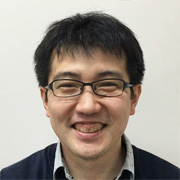
Graduate School of Medicine, The University of Tokyo
Medical ultrasound engineering
Ultrasound Computed Tomography (USCT)
Preparation in progress
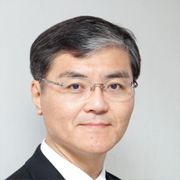
Graduate School of Engineering, The University of Tokyo
Precision Engineering
Medical Technologies Evaluation Laboratory (MTEL)
Acceleration of Novel Medical Device Research and Development at Medical Technology Evaluation Laboratory
Features of medical device development are summarized as follows:
- Although various novel medical devices can be invented based on basic biomedical engineering research, most medical device inventions are inspired by clinical needs found in actual clinical practice. Typical cases are improvement of usability for the clinician.
- Medical devices are improved frequently even after commercialization. Unmet needs and problems are often found only after routine use of the device. As a result, longevity of medical products in the market is relatively short compared with that of pharmaceuticals. In another sense, new technologies can be easily introduced in medical device design.
- To obtain approval of a medical device, it is necessary to present scientific data on the safety, effectiveness and reliability of the device to the designated regulatory body.
In contrast to the R&D of pharmaceuticals, evaluation method for medical devices, in particular that for innovative medical devices, is not formulated. Thus it is necessary to also develop scientific evaluation methods.
We have developed the "Medical Technology Evaluation Laboratory (MTEL)", in order to accelerate the development of medical device technologies having the above characteristics through the utilization of the large amount of research outputs coming from collaborative research between medicine and engineering in the University of Tokyo, and to accelerate industry-academia collaboration for social implementation of medical device technologies. The laboratory is open to all the researchers in the University of Tokyo and their collaborators in industries who conduct research to develop medical device and related biomedical technologies
We analyzed the required functions of the laboratory as follows:
- It can provide an environment simulating clinical practice, where researchers can evaluate medical device designs and prototypes.
- It can promote the involvement of clinical doctors from an early stage of R&D.
- It can provide an experimental environment for studies on scientific evaluation methods for medical devices and studies on the application methods of new devices.
- It can provide an environment for training of medical doctors, which is essential for the introduction of new medical devices in clinical practice.
- It can provide an environment for the acquirement of reliable high quality data for non-clinical medical device evaluation that leads to further development into clinical research.
- It can be used for research and development activities at various stages of development, ranging from early system concept design, design improvement of prototypes, to final evaluation for clinical research.
- It must have a system that can preserve confidentiality required for industry-university collaborative research.
As a laboratory with such functions, we built the laboratory in the basement of the Molecular & Life Innovation Building located close to the University of Tokyo Hospital. Easy access from the hospital enables busy clinical doctors to efficiently conduct studies on medical technologies. At the same time it is close to the School of Engineering’s buildings. It is easy for engineering researchers to move their experimental equipment and prototypes from their own laboratories.
A hybrid operating room having almost the same quality as one used clinically has been installed. An intraoperative flat panel fluoroscope is installed to enable intraoperative three dimensional X-ray observation as well as three dimensional angiography. Here we can conduct experiments for the development of the next generation minimally invasive treatment device such as devices for catheter intervention. Veterinarians are ready to support acute animal experiments using swine. Equipment required for surgical procedures such as an anesthesia machine, an energy device, a laparoscope, an endoscope, a biological monitor, a defibrillator, a biochemical analysis system and other basic experimental equipment are installed. In addition, an air conditioning and ventilating system with filters creating downward stream are installed to keep the experimental environment clean and safe. Regarding video recording, it has a system that can simultaneously record 4 types of video streams such as surgical field images, endoscopic images, and X-ray images while adding time stamps. Using this system we can record reliable image data as evidence for scientific evaluation.
In many cases, prototypes of novel medical devices and systems are large and require tuning and adjustment before experiments. A preparation space is dedicated for this purpose.
Also, in consideration of industry-academia collaboration, it is equipped with an entry management system by IC cards to record participants in each experiment, and limit access to the experiment only to designated persons.
Although the current experimental laboratory is not yet a GLP (Good Laboratory Practice)-compliant facility, we plan to upgrade the facility to be able to collect reliable nonclinical data for medical technology evaluation by following GLP compliance in the future.
With the introduction of this experimental laboratory, it becomes possible to conduct experiments that contributes to the development of new medical technology, by efficiently developing high-quality medical equipment, through the acceleration of translation of excellent medical-engineering collaborative research at the University of Tokyo to industry-academia collaborative research. We are also planning to use it for the education of highly specialized human resources from the graduate schools of Engineering and Medicine who can contribute jointly to the development of new medical devices and medical systems through research activities.
